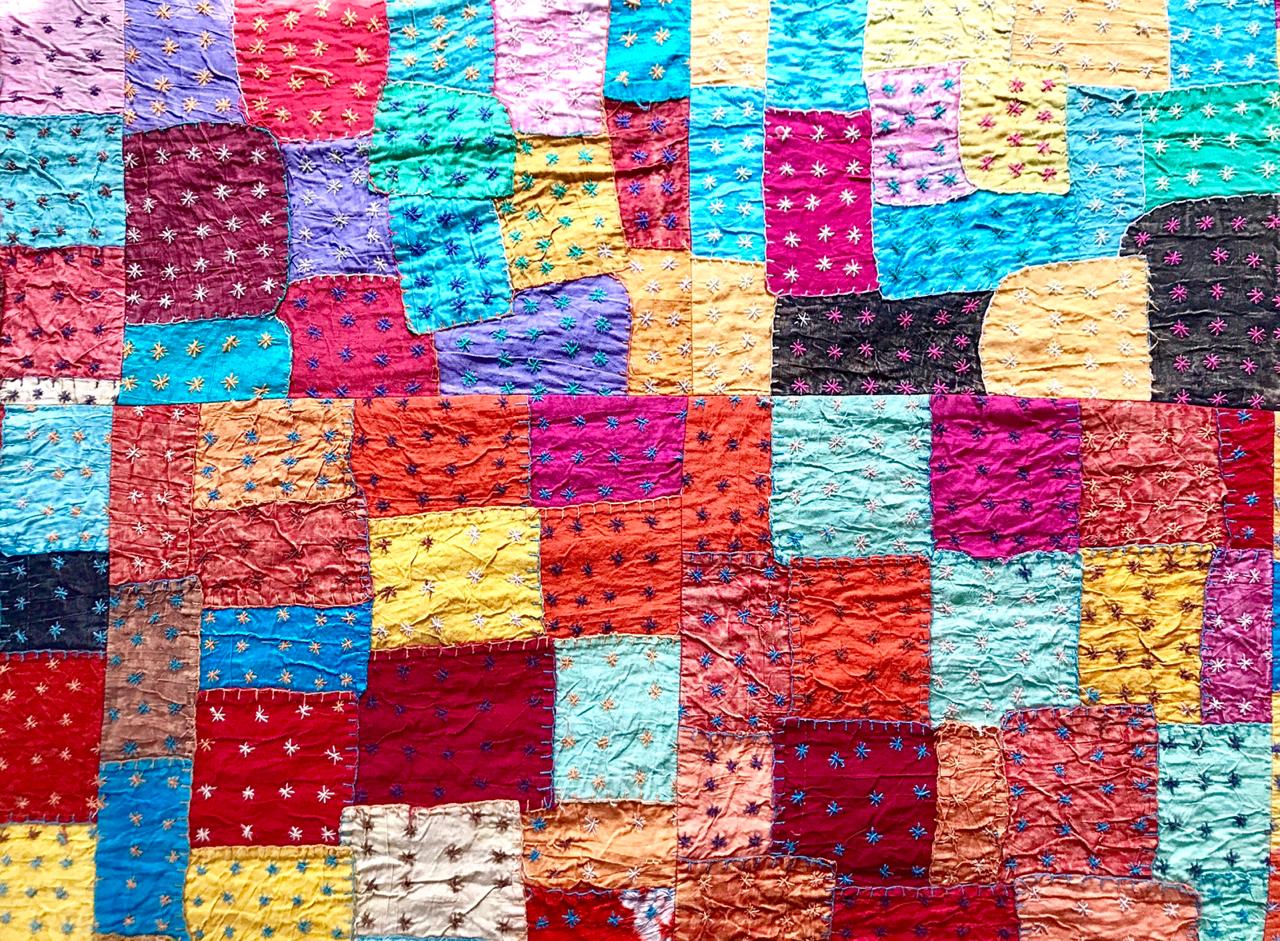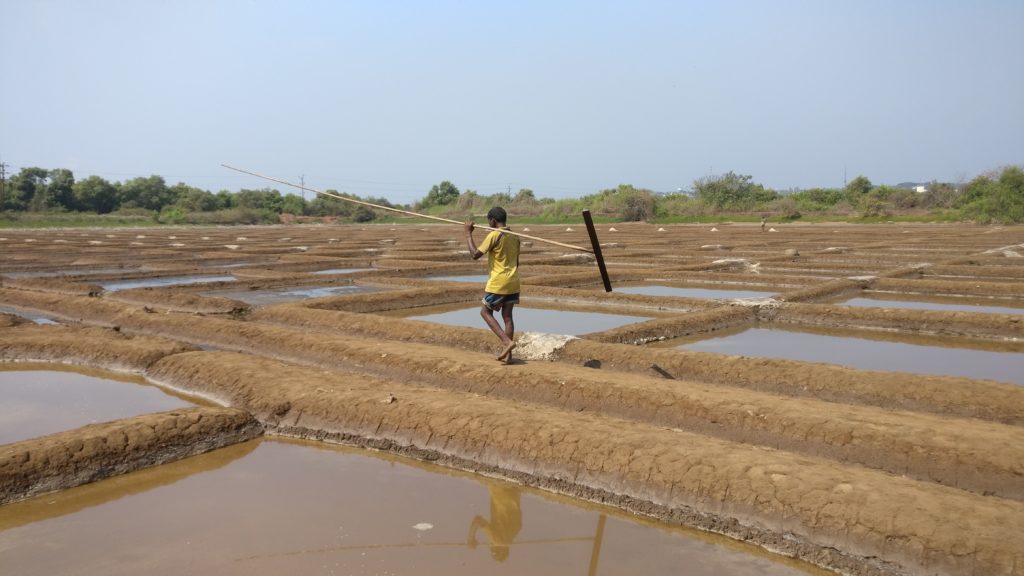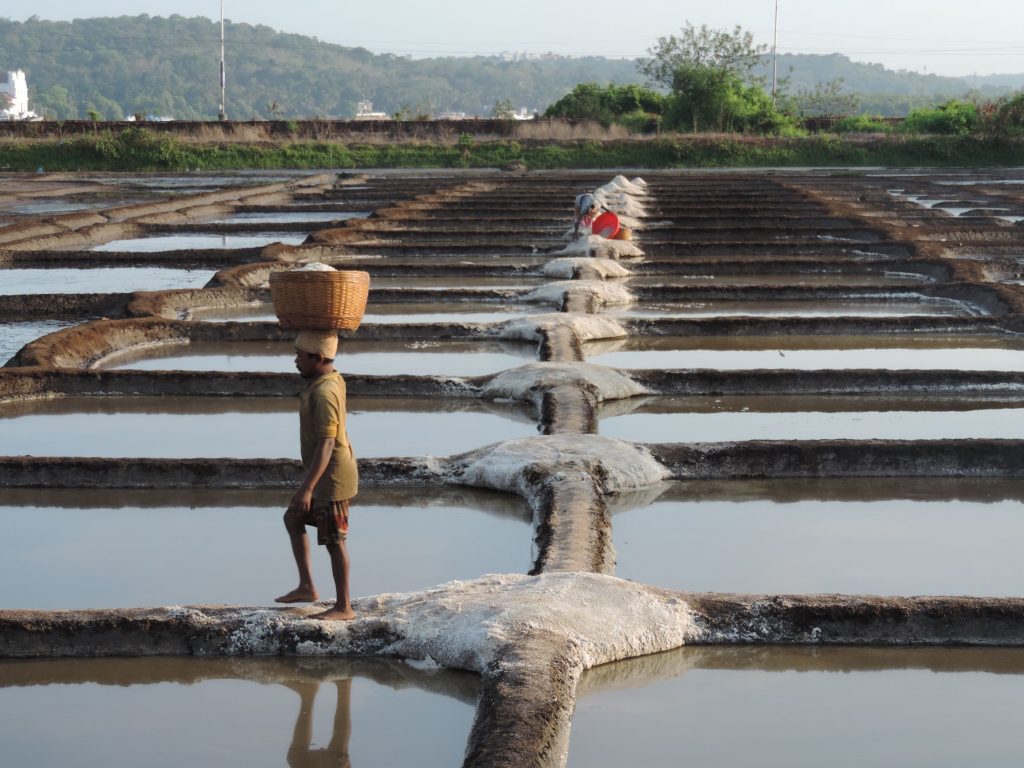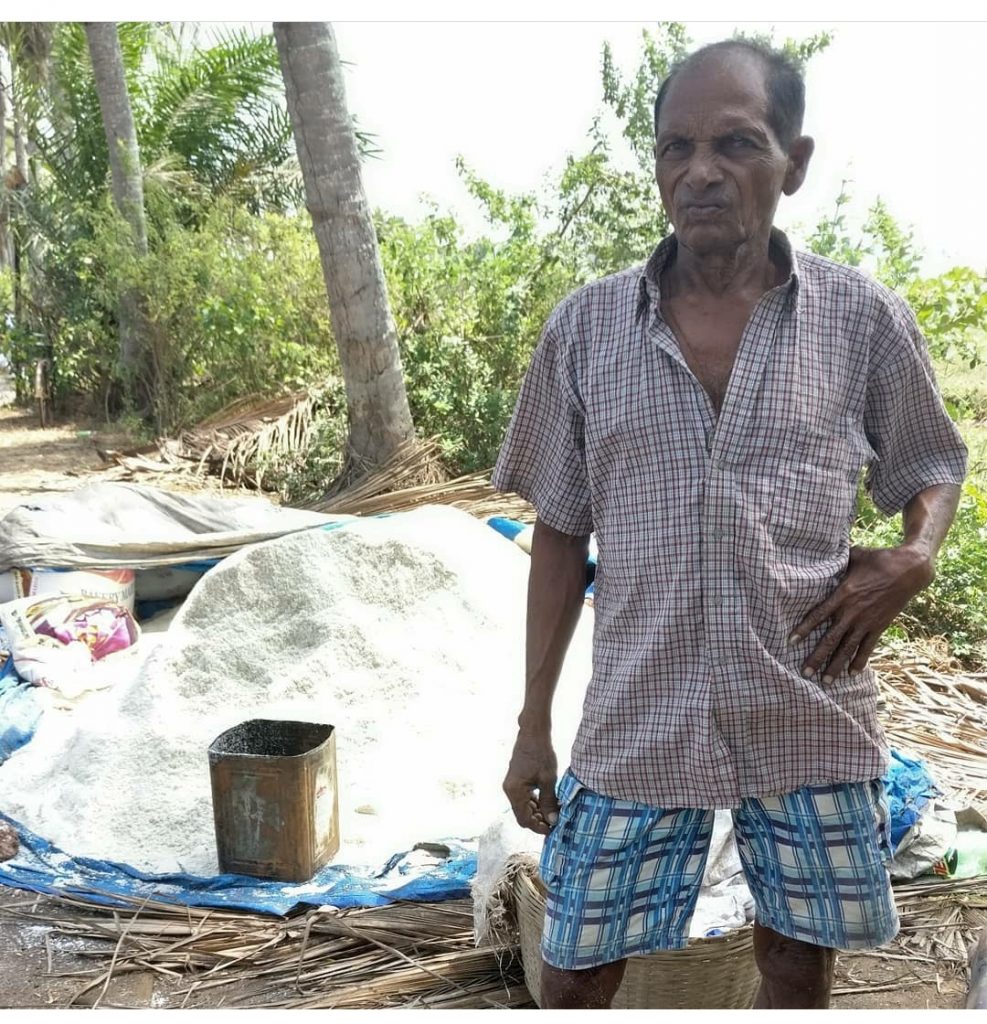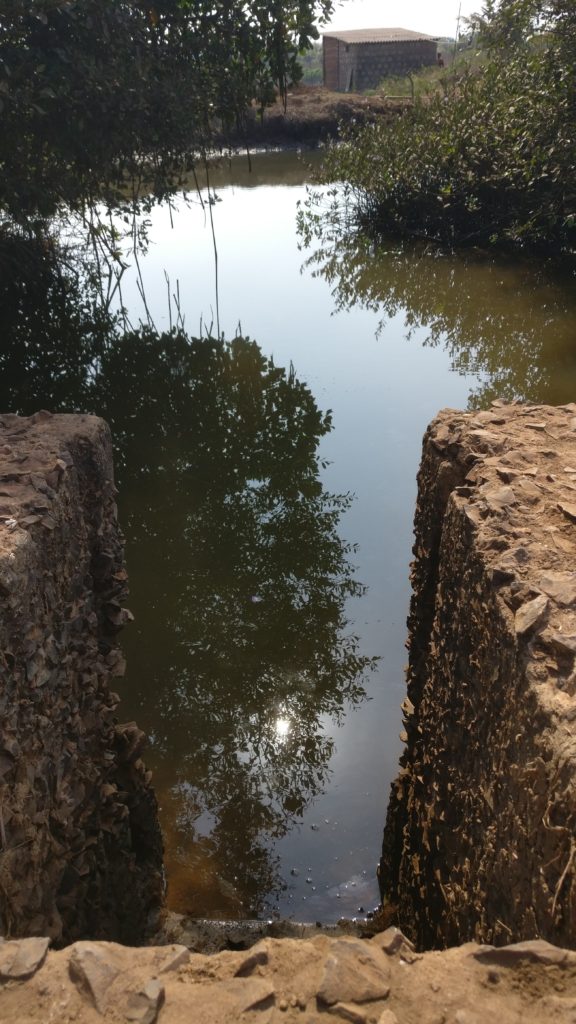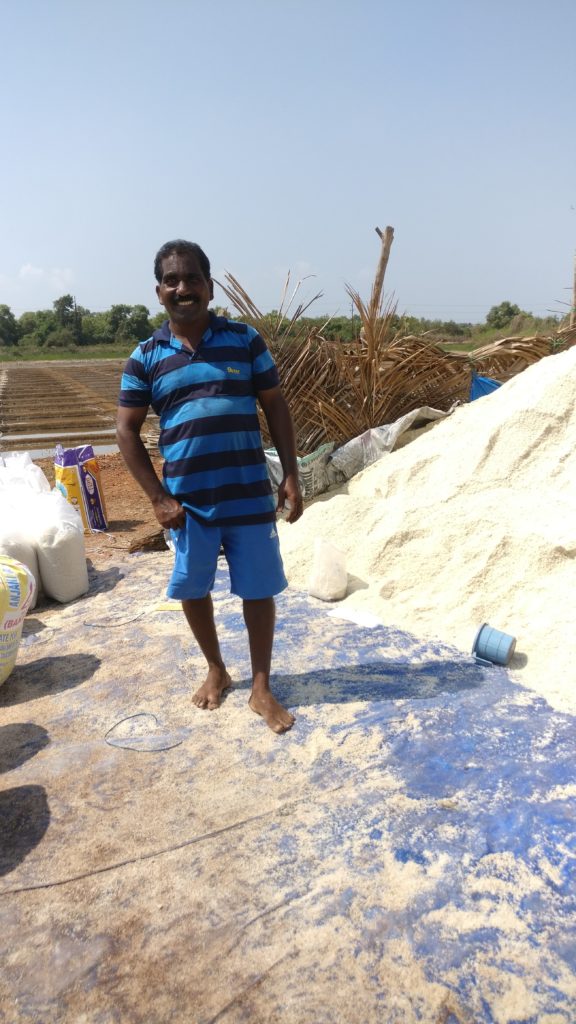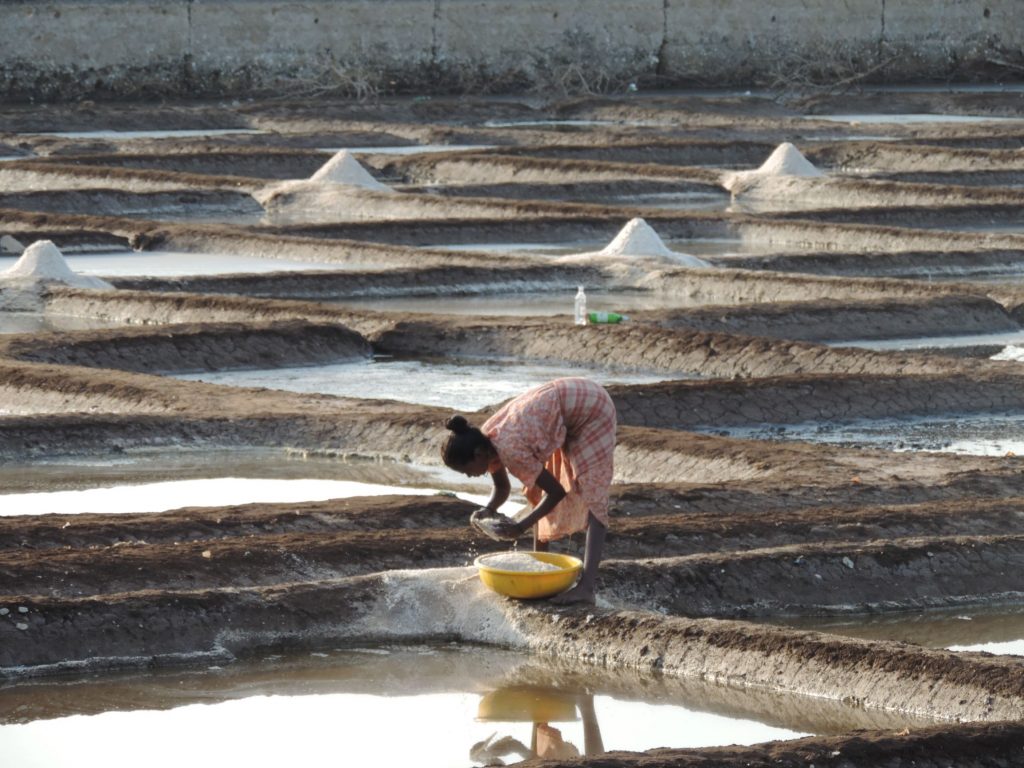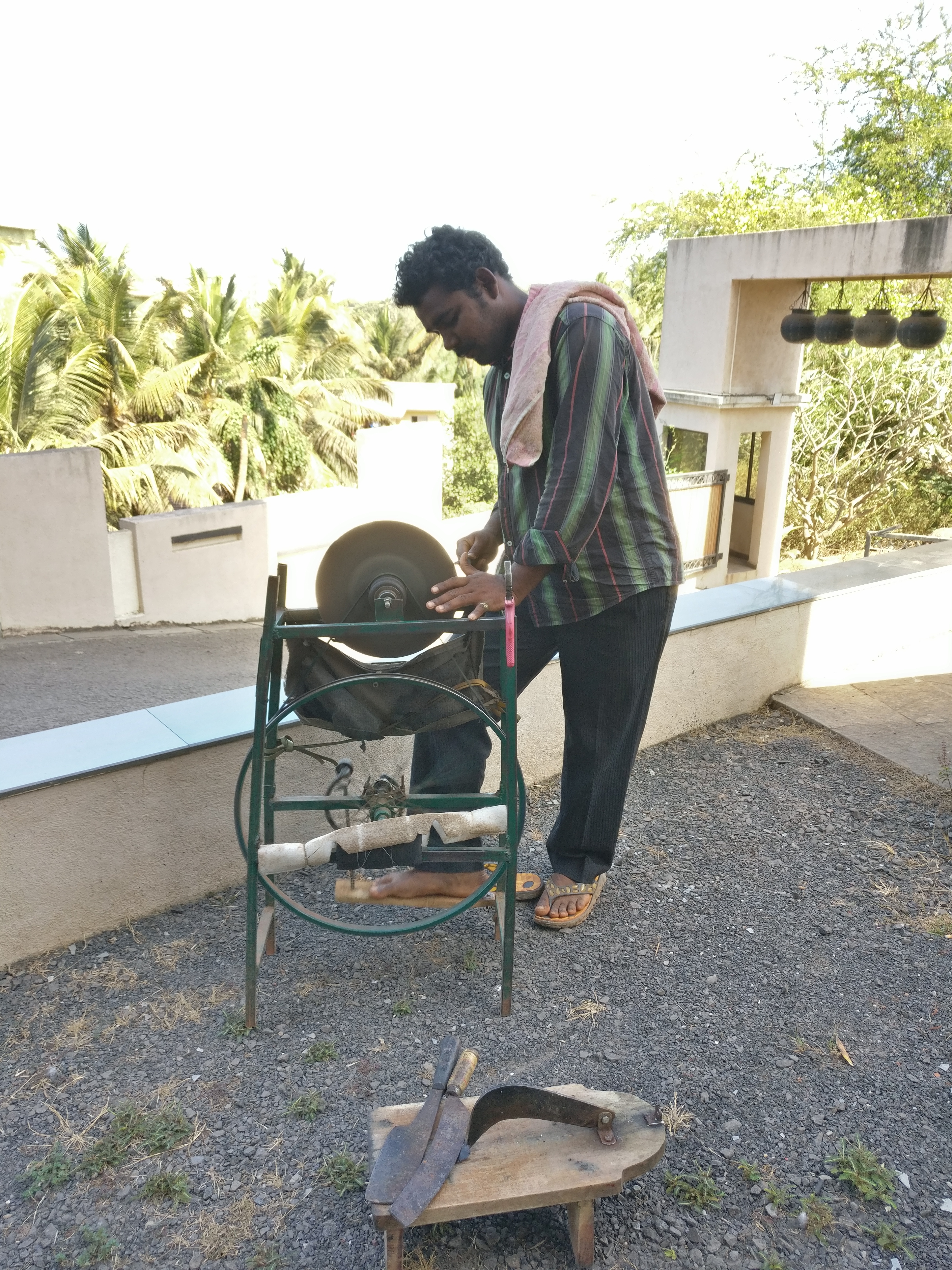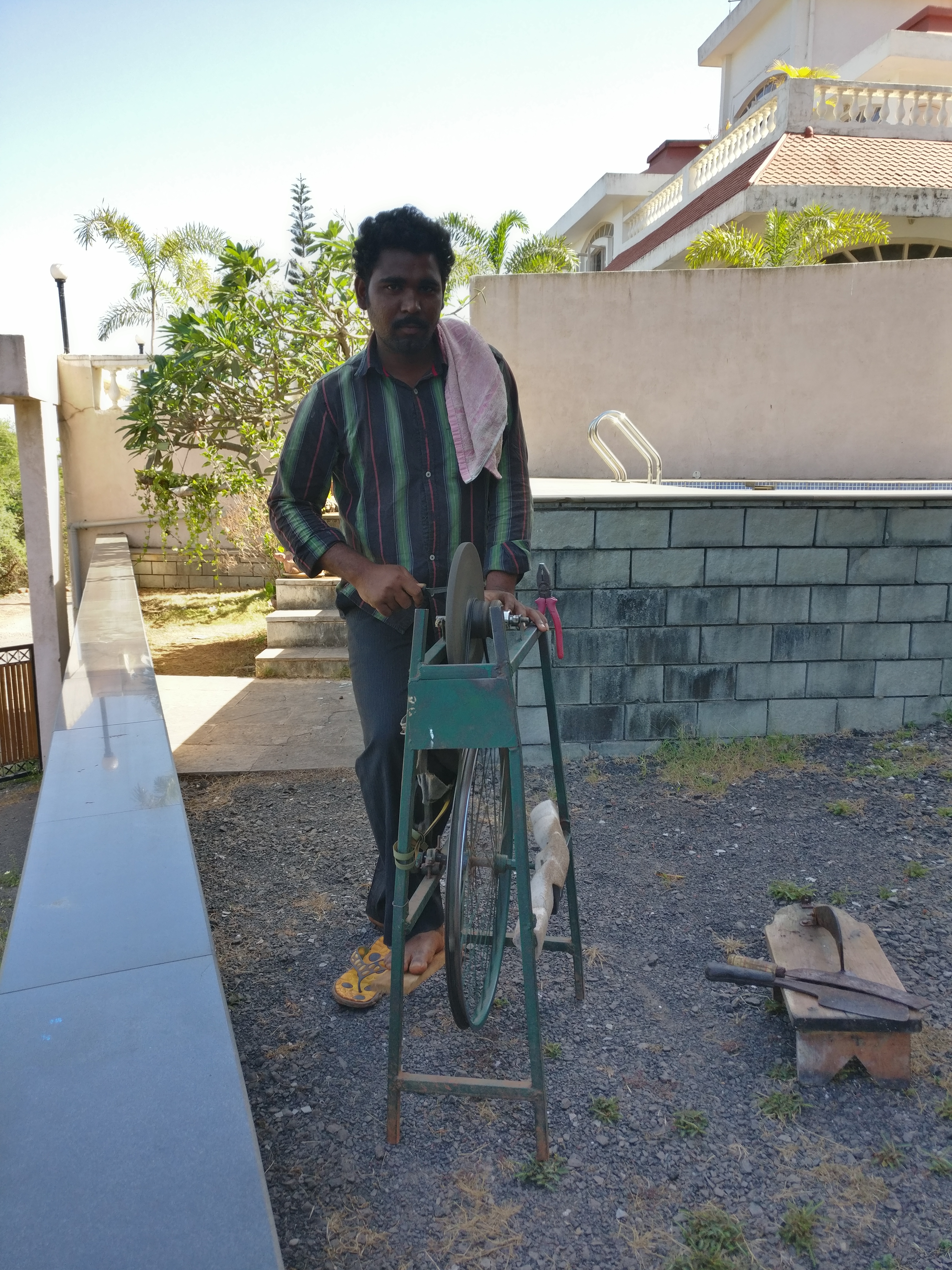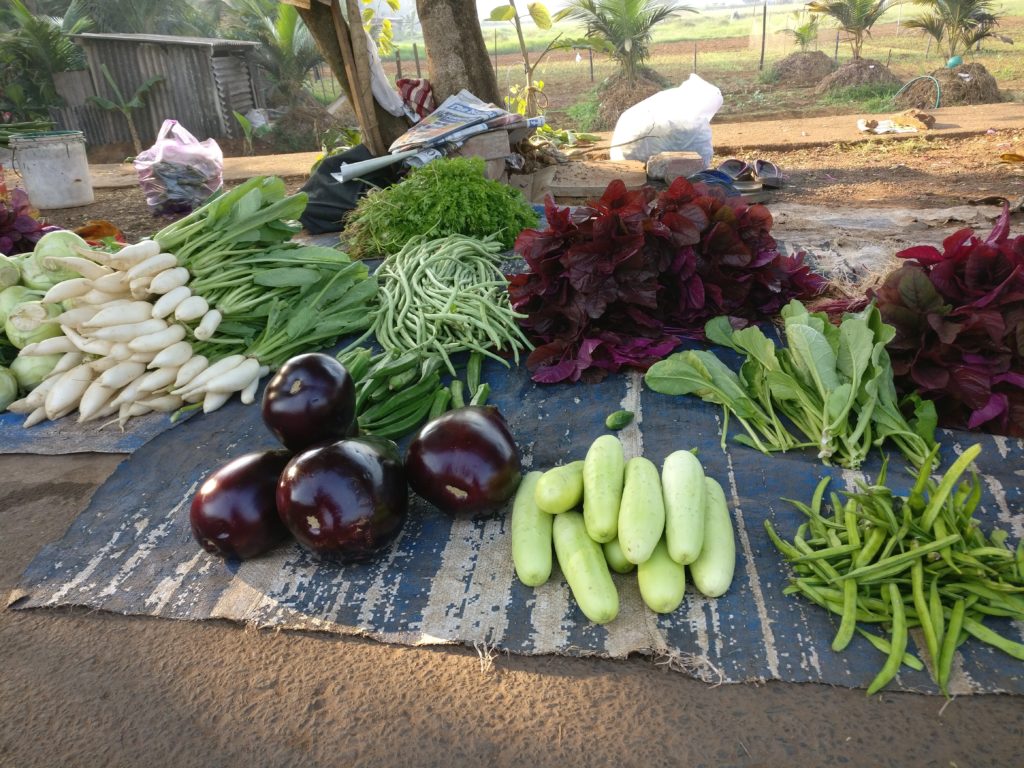Mandrem, to a lot of tourists and unfortunately to the younger generation of Goans, is synonymous with sun, sand, beaches and shacks. Located in the Pernem taluka, between the two popular tourist places of Morjim and Arambol, Mandrem is an idyllic coastal village, when ‘Googled’, will only throw up names of shacks and restaurants that the tourists flock to Goa for. But on a Sunday morning, I have a different purpose to visit this beautiful village…to meet a man whose family has been making idols of Lord Ganesha for the last 60 years.

Every year, in the month of May, Praveen Murari Mhamal and his family switch gears to a different routine. During the months leading to Ganesh Chaturthi, Sanjay, along with his family and with the help of a few local workers, chalks out his plan for the season. The routine demands 15 hours of labour every day which includes procuring the right amount and quality of clay, deciding the theme and style of each individual idol, making individual body parts using moulds, carving out the required shapes and surface texture, giving the idols ample time to dry before finally applying the first coat of paint.

Started by Praveen’s father, Murari Ganesh Mhamal in early 1950s, ‘Susheela Arts’ has been catering to the demand of idols during the season since then. Every year idol-makers across the state start their work by the beginning of June with the advent of the first rains. The work comes with a time limit as the festival is celebrated in the months of August/September depending on the Hindu calendar. The states of Goa and Maharashtra celebrate Ganesh Chaturthi festival with pomp and in Goa alone, around 500 artisans across the state make and sell the idols. Praveen laments that procuring clay has become difficult now. Sometimes idols are also made with lagddo (clay) mixed with papier mache and a binding glue. In the earlier times clay used to be taken from agricultural land and farmers in the villages would request the artisans to take clay from their land. It was a sustainable practice, encouraging rotation and tilling of the earth, making it richer and more fertile. Today, it has become difficult to get clay because of growing commercial activities in the area or building of residential complexes and whatever is left is polluted with construction debris. Clay from Mandrem is by far the best in Goa and is in great demand as it has the right consistency and texture to make idols. Black clay, which is available easily in other parts (Warkhand v illage in Pedne Taluka) is too fine to use and leaves fine lines and cracks when it starts drying. But the red clay which is used in Mandrem has natural mixture of fine gravel, which is perfect to work as it dries faster and thus can be painted sooner too. Earlier, natural colours were used which were prepared at home using colours with resin used from local trees especially cashew. Now-a-days, distemper is used to paint the idols as natural colours are difficult to procure.
In the recent times, in spite of the ban on the use of Plaster of Paris (PoP), many idol makers are still using the same. PoP idols are lighter than the clay variety as they are cheaper and easier to make. Says Praveen, “PoP idols can be made with one single mould. They dry faster and hence can be painted also faster. But the clay idols are made using different moulds for different parts. Each of these have to be made separately and then put together as one single idol, which is time consuming.” Despite the laborious work, there are still artisans like Praveen who believe in promoting and preserving this skill.
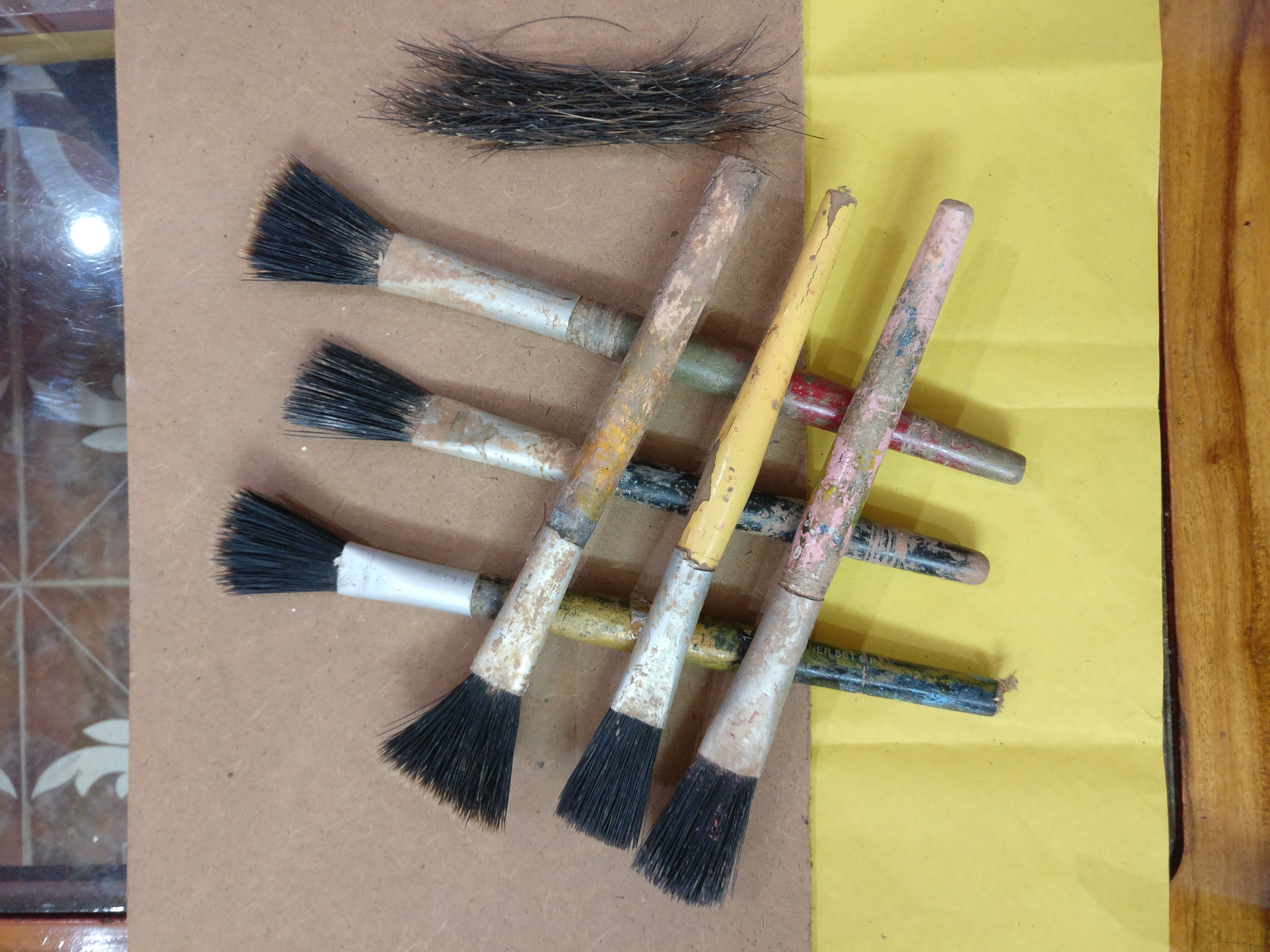
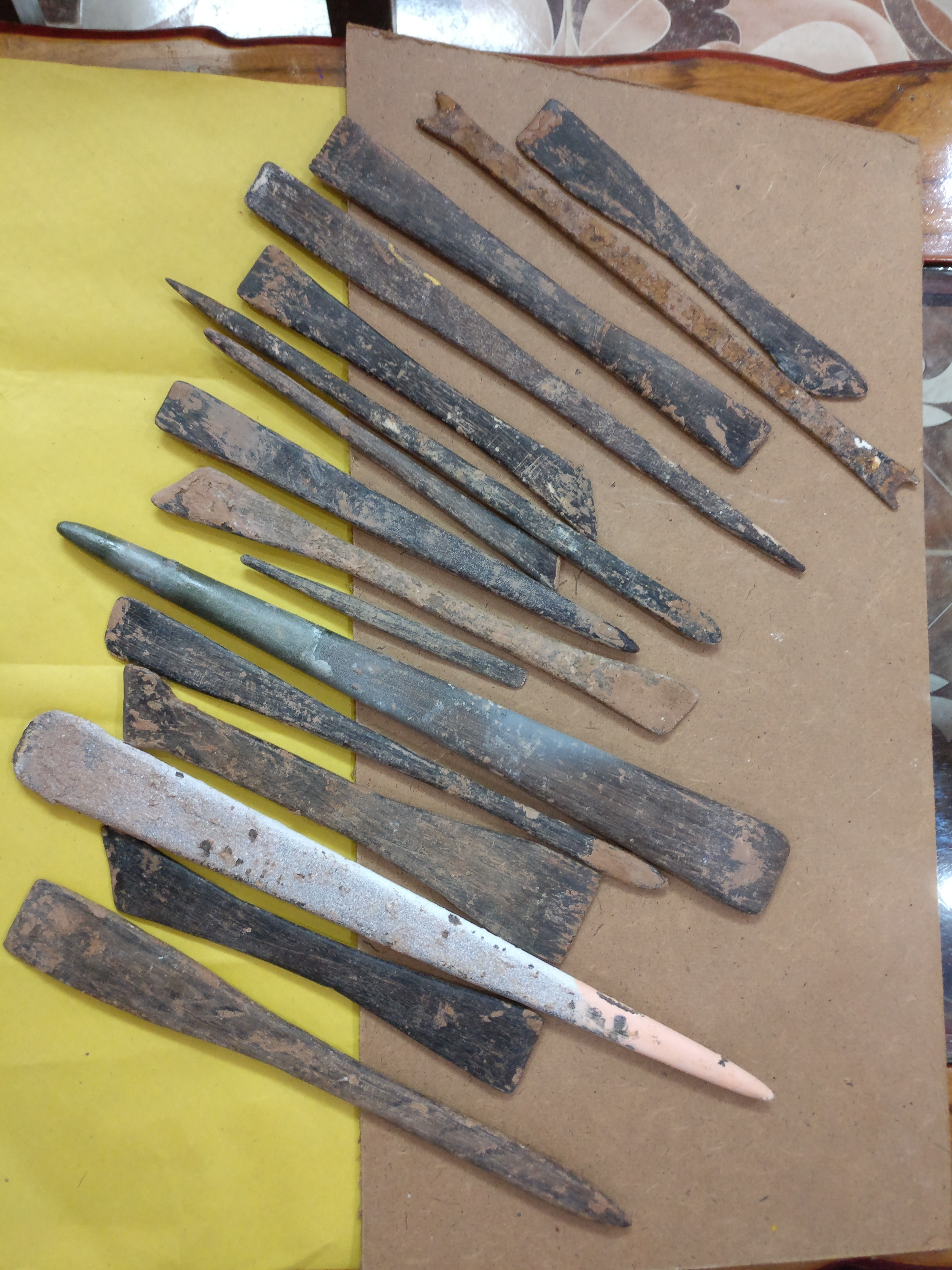
Every year, Praveen makes around 250 idols and takes almost 2 ½ to 3 months to complete the work. Each idol is given exclusive attention and detailing is done with absolute care. After each part is carefully given shape with the mould, the artist uses two brushes – hard and soft – to give the surface texture and smoothness. Traditionally the bristles of the hard brush were made using the thick hairs from the neck of a wild boar and the wooden handle from soft wood of a pine tree. Praveen uses the same methods that he learnt from his father and makes the brushes with his own hands. Though a time-consuming affair, Praveen’s passion and dedication towards his work prompts him to continue with the conventional methods. There are very few artisans who use traditional methods to make idols in Goa because of lack of any financial benefit and long hours of labour.
It is a custom in Goa to procure idols from the same artisan who the family has been buying from for many generations. Hence whatever the price or dakshina (offering or gift) that the family has been giving the artisan for generations, has not increased over the years. Many continue to offer the same paltry amount and artisans don’t get any financial gain. Many times, a ‘dakshina’ of betel leaves, betel nuts and coconut is offered to the artisan in exchange for the idol, as is the family tradition. Hence some idol makers are either moving to other towns during the season so they can sell the idols for a higher price, or are closing their business.
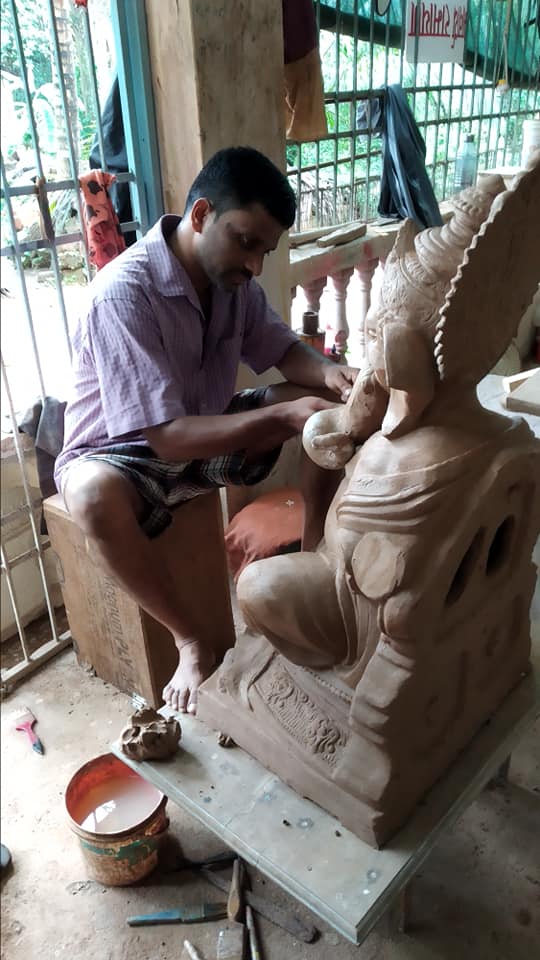
“For me each idol is unique and special. I don’t neglect or overlook any detail. I try to create a perfect idol of Lord Ganesha to depict the Lord himself sitting in front of me because, for the family who buys from us, it is the idol they are going to worship,” says Praveen with a smile.
The subsidy that is announced by the Goa government, is not sufficient at all and doesn’t cover the expenses. Also the subsidy comes very late every year and the artisans don’t get any advantage from it. This state of affairs is encouraging import of idols from other states which are commercially done using environmentally hazardous materials. But unfortunately, neither the government nor the general public worry about water pollution when the idols are immersed. It is a sad sight a few days later, idols washed ashore totally intact and in a state of neglect.
Along with Ganesha idols, Praveen also makes idols for temple festivals. Praveen and his brother Sanjay Mhamal make thematic backdrops for stage performances during festivals like Mahashivratri, Diwali and Durga Puja and other occasions on order. He takes us for a tour around his workshop and shows us the painted backdrops that he has made for a school event in Mandrem recently. “Such work has come down drastically and we don’t earn much with this occupation anymore. So we cater to other stage requirements like complete sound system, stage decoration, furniture etc for events.” Praveen Mhamal supplies costumes for the historical and religious plays staged in schools, temples and other events.
Praveen is happy that he is able to preserve his family occupation as well as the traditional art that he has inherited from his father. His children who are still too young to decide their career, help him with kneading the clay or painting the idols during the busier months.
Traditional occupations the world over are slowly getting obliterated, some because of the changing lifestyle but many because of lack of resources and sufficient support and aid from society and government. While lifestyle changes are normal and natural to a certain extent, those which encourage sustainable growth development should be preserved for the posterity.
